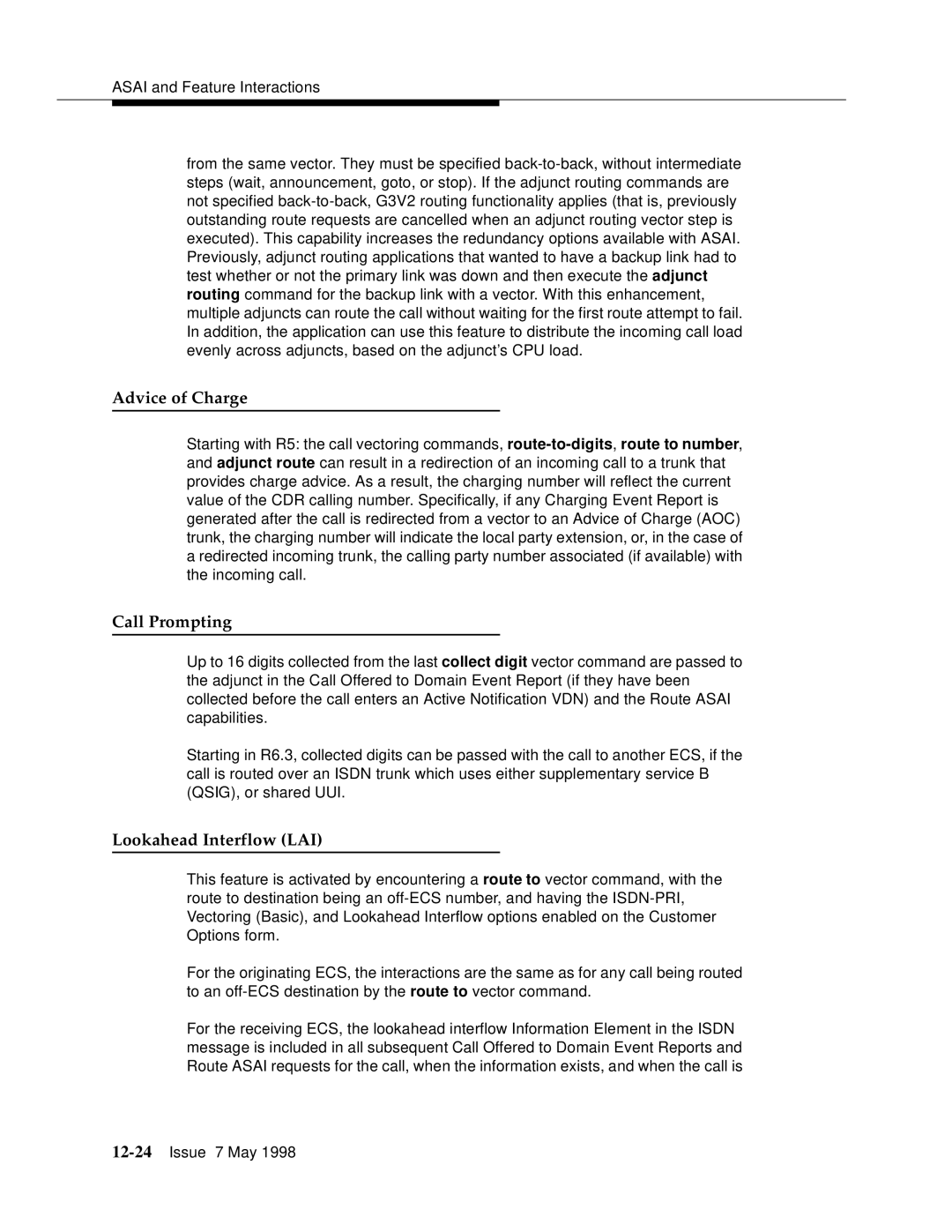
ASAI and Feature Interactions
from the same vector. They must be specified
Advice of Charge
Starting with R5: the call vectoring commands,
Call Prompting
Up to 16 digits collected from the last collect digit vector command are passed to the adjunct in the Call Offered to Domain Event Report (if they have been collected before the call enters an Active Notification VDN) and the Route ASAI capabilities.
Starting in R6.3, collected digits can be passed with the call to another ECS, if the call is routed over an ISDN trunk which uses either supplementary service B (QSIG), or shared UUI.
Lookahead Interflow (LAI)
This feature is activated by encountering a route to vector command, with the route to destination being an
For the originating ECS, the interactions are the same as for any call being routed to an
For the receiving ECS, the lookahead interflow Information Element in the ISDN message is included in all subsequent Call Offered to Domain Event Reports and Route ASAI requests for the call, when the information exists, and when the call is
